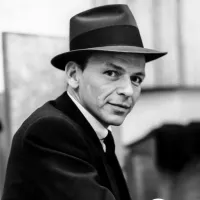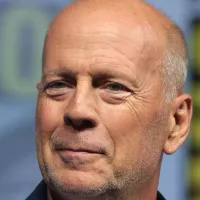Die Hard, a 1988 action film, stars Bruce Willis as John McClane, a New York City police detective. While visiting his estranged wife Holly (Bonnie Bedelia) in Los Angeles during a Christmas Eve party at Nakatomi Plaza, terrorists led by Hans Gruber (Alan Rickman) seize the building. Trapped inside, McClane must use his wits and training to outsmart the terrorists and save the hostages, including his wife. He finds himself alone and outnumbered, forced to rely on unconventional tactics to evade the sophisticated criminals. As McClane disrupts their meticulously planned heist, he becomes a thorn in Gruber's side, leading to a cat-and-mouse game throughout the skyscraper. The film combines thrilling action sequences with suspenseful moments as McClane races against time to stop the terrorists and save the day.
1934: Inclusion of "Winter Wonderland"
"Winter Wonderland" (1934) was another song added to the Die Hard score at the insistence of Michael Kamen.
1952: Incorporation of "Singin' in the Rain"
Composer Michael Kamen agreed to use Beethoven's 9th Symphony on the condition of also incorporating "Singin' in the Rain" (1952), another piece featured in "A Clockwork Orange".
1955: Richard III
In 1955, Laurence Olivier's performance in Richard III influenced Alan Rickman's portrayal of Hans Gruber in Die Hard, according to critics.
1966: The Detective Novel Published
The Detective, the prequel novel to Nothing Lasts Forever, was published in 1966.
1968: The Detective Film Released
The film adaptation of The Detective, starring Frank Sinatra, was released in 1968.
1971: Inspiration from A Clockwork Orange
Director John McTiernan drew inspiration from Stanley Kubrick's "A Clockwork Orange" (1971), wanting to incorporate Beethoven's 9th Symphony into the Die Hard score.
1972: The Poseidon Adventure
Released in 1972, The Poseidon Adventure is cited as an influence on Die Hard.
1974: The Towering Inferno Released
The disaster film The Towering Inferno, which inspired Thorp's novel, was released in 1974.
1976: Die Hard: Year One
A comic book prequel to the original film, Die Hard: Year One, was released, set in 1976 and chronicling McClane's time as a rookie officer.
1978: Superman
The 1978 film Superman is used in comparisons with Die Hard's portrayal of masculinity.
1979: Nothing Lasts Forever published
Roderick Thorp's novel "Nothing Lasts Forever," which served as the basis for Die Hard, was published in 1979.
1979: Alien
The 1979 film Alien influenced Die Hard, according to some reviewers.
1981: Raiders of the Lost Ark
The film Raiders of the Lost Ark, released in 1981, is used in analysis comparing its portrayal of heroism to that of Die Hard.
1982: Tootsie
Dustin Hoffman's $5.5 million salary for Tootsie in 1982 was a benchmark in discussions about Willis's high salary for Die Hard.
1983: Heart Like a Wheel Released
Bonnie Bedelia starred in the biographical film Heart Like a Wheel, which was released in 1983.
1983: Film Stunt Safety Concerns
Following a fatal accident on the set of "Twilight Zone: The Movie" in 1983, film stunt safety gained greater attention, though Willis still performed many of his own stunts in Die Hard.
1984: Missing in Action
The 1984 film, Missing in Action, was deemed less impressive by some when compared to Die Hard upon its release.
1984: Box Office Comparison to 1984
The 1988 summer box office, including Die Hard's performance, saw the most successful summer since 1984, exceeding previous years' records.
1984: Ghostbusters Released
The film Ghostbusters, which demonstrated the potential of TV stars in blockbusters, was released in 1984.
1986: James Horner's Unused Score
A section of James Horner's unused score from "Aliens" (1986) was used for the final scene where Karl tries to kill McClane.
June 1987: Die Hard Screenplay Completed
Jeb Stuart completed the screenplay for Die Hard in June 1987.
November 2, 1987: Willis Begins Filming
Bruce Willis commenced filming on November 2, 1987, immediately after working on "Moonlighting". His first scene was the iconic firehose jump from the rooftop.
November 1987: Filming Begins
Filming for Die Hard began in November 1987.
November 1987: Principal Photography Begins
Principal photography for Die Hard began in November 1987 at Fox Plaza in Century City. The location was chosen late in production due to its mostly unoccupied status and agreement terms of no daytime filming and no explosion damage.
1987: Willis Confirmed for Die Hard, Blind Date Released
Bruce Willis's casting in Die Hard was confirmed in 1987, the same year his film Blind Date was released.
1987: Die Hard Development Begins
Development of Die Hard began in 1987 with screenwriter Jeb Stuart.
1987: McTiernan Hired and Predator Released
John McTiernan was hired to direct Die Hard in 1987, the same year his film Predator was released.
1987: RoboCop
RoboCop, released in 1987, was identified as an influence on Die Hard.
March 1988: Principal Photography Concludes
Filming concluded in early March 1988 after approximately four months, with a budget of around $25-35 million.
March 1988: Filming Ends
Filming for Die Hard concluded in March 1988.
July 12, 1988: Die Hard Premieres
Die Hard premiered on July 12, 1988, at the Avco theater in Los Angeles.
July 1988: Die Hard Release and Reception
Die Hard was released in July 1988 to mixed reviews, but it became a box office success.
July 15, 1988: Die Hard's Limited Release
Die Hard had a limited release on July 15, 1988, in 21 theaters across 13 cities, exceeding expectations with a strong per-theater average gross.
July 22, 1988: Die Hard's Wide Release
Die Hard expanded to a wider release on July 22, 1988, across 1,276 theaters, landing as the number three film of the weekend despite competition.
1988: Fox Needs a Blockbuster
20th Century Fox needed a summer blockbuster for 1988, which contributed to the greenlighting of Die Hard.
1988: Bruce Willis cast and other actors decline.
Bruce Willis was cast in 1988 after several established action stars and major actors turned down the role.
1988: Die Hard's Global Box Office Performance
Die Hard performed well globally in 1988, securing a position among the top-grossing films worldwide despite not achieving the top spot in North America.
1988: Die Hard released
Die Hard, an action film starring Bruce Willis as John McClane, was released in 1988.
1988: Die Hard's Success and Impact
In 1988, Die Hard defied expectations, proving a significant success against the backdrop of a comedy-dominated film landscape, contributing to a resurgence for 20th Century Fox.
1988: Die Hard Deemed "Morally Objectionable"
In 1988, Die Hard was among several films deemed "morally objectionable" by the Roman Catholic Church.
1988: Summer Movie Season Expectations
In 1988, the film industry anticipated a summer dominated by action and comedy films, with sequels and established franchises expected to perform strongly.
January 1989: VHS Release
Die Hard was released on VHS in January 1989.
1989: Video Game Release
A Die Hard video game was released in 1989 for Commodore 64 and Windows.
1989: Academy Award Nominations
Die Hard received several Academy Award nominations in 1989.
1989: Family Matters begins
Reginald VelJohnson's role in Die Hard helped launch his role in Family Matters. The series premiered in 1989.
1990: Die Hard 2 Release
Die Hard 2 was released in 1990.
1990: The Hunt for Red October
Following the success of Die Hard, director John McTiernan directed The Hunt for Red October in 1990.
1992: Under Siege Release
Under Siege, inspired by Die Hard's confined setting and lone hero concept, was released in 1992.
1993: Loaded Weapon 1 Cameo
Bruce Willis made a cameo appearance as John McClane in the parody film Loaded Weapon 1 in 1993.
1993: Cliffhanger Release
Cliffhanger, another film influenced by Die Hard, came out in 1993.
1994: Speed Release
Speed, following the "Die Hard" formula, premiered in 1994.
1995: Die Hard with a Vengeance Release
Die Hard with a Vengeance was released in 1995.
1996: Die Hard Trilogy Release
The Die Hard Trilogy video game was released for PlayStation in 1996.
1997: Air Force One Release
Air Force One, another film inspired by Die Hard, was released in 1997.
1997: VHS Rental Earnings
By 1997, Die Hard had earned an estimated $36 million in VHS rentals.
1998: Family Matters ends
Family Matters ended in 1998.
1999: DVD Release
Die Hard was released on DVD as part of a trilogy collection in 1999.
2001: Special Edition DVD Release
A special edition DVD of Die Hard, containing additional features, was released in 2001.
2001: AFI's 100 Years...100 Thrills
Die Hard was ranked number 39 on AFI's 100 Years...100 Thrills list in 2001.
2002: Die Hard: Nakatomi Plaza and Die Hard: Vendetta Release
Two first-person shooter games, Die Hard: Nakatomi Plaza and Die Hard: Vendetta, were released in 2002.
2003: Inclusion in 1001 Movies You Must See Before You Die
Die Hard was included in the book "1001 Movies You Must See Before You Die" in 2003.
2003: AFI's 100 Years...100 Heroes and Villains
Hans Gruber was ranked number 46 on AFI's 100 Years...100 Heroes and Villains list in 2003.
2006: Empire's 100 Greatest Movie Characters
Empire ranked John McClane and Hans Gruber among its 100 Greatest Movie Characters in 2006.
July 2007: Undershirt Donation
In July 2007, Bruce Willis donated the undershirt he wore in Die Hard to the Smithsonian's National Museum of American History.
2007: Blu-ray Release
Die Hard was released on Blu-ray in 2007.
2007: Live Free or Die Hard Release
Live Free or Die Hard, also known as Die Hard 4.0, was released in 2007.
2008: Empire's 500 Greatest Movies of All Time
Empire ranked Die Hard number 29 on its list of the 500 Greatest Movies of all Time in 2008.
2013: A Good Day to Die Hard Release
A Good Day to Die Hard, the fifth film, was released in 2013.
2013: 25th Anniversary Mural
A mural of John McClane was created at Fox Studio lot in 2013 to celebrate the film's 25th anniversary.
2014: The Hollywood Reporter's Ranking
The Hollywood Reporter ranked Die Hard as the 83rd best film of all time in 2014.
2015: Rolling Stone Reader's Poll
Rolling Stone readers ranked Die Hard as the 10th best action film in a 2015 poll.
2015: The Nakatomi Plaza Collection Release
The Nakatomi Plaza Collection, containing all five Die Hard films, was released on Blu-ray in 2015.
2017: Die Hard added to National Film Registry
Die Hard was recognized for its cultural significance and added to the National Film Registry in 2017.
2017: Empire Reader's Poll
Empire readers ranked Die Hard as the 20th best action film in a 2017 poll.
2017: National Film Registry Induction
In 2017, Die Hard was inducted into the National Film Registry for its cultural, historical, and aesthetic significance.
2017: YouGov Poll on Christmas Movie Status
In 2017, a YouGov poll revealed that only 31% of UK citizens consider Die Hard a Christmas film.
2018: 4K Ultra HD Blu-ray Release
A remastered 4K Ultra HD Blu-ray version of Die Hard was released for its 30th anniversary in 2018.
2018: Die Hard's 30th Anniversary Acclaim
Die Hard received significant acclaim as one of the greatest action films on its 30th anniversary in 2018.
2018: Die Hard Christmas Trailer and 30th Anniversary
In 2018, Fox released a Christmas-themed trailer for Die Hard and declared it "the greatest Christmas story ever told" for its 30th anniversary.
2018: Scott Tobias Commentary
Scott Tobias commented on Die Hard's influence in The Guardian in 2018.
2018: Die Hard: The Ultimate Visual History Release
The book "Die Hard: The Ultimate Visual History" was released in 2018.
2019: Board Game Release
A board game based on Die Hard was released in 2019.
2019: Disney Acquires 21st Century Fox
Disney's acquisition of 21st Century Fox in 2019 impacted plans for a sixth Die Hard film.
Mentioned in this timeline
PlayStation is a video game brand by Sony Interactive Entertainment...

Frank Sinatra nicknamed Chairman of the Board and Ol' Blue...

Christmas is an annual festival celebrated on December th commemorating...
The Guardian is a British daily newspaper founded in as...

The Catholic Church the largest Christian church globally with over...

Walter Bruce Willis a retired American actor gained prominence for...
Trending

9 months ago Warriors defeat Bucks as Curry rests; Butler III shines in shocking victory.

1 month ago Tucker Carlson faced criticism from Ben Shapiro amidst Heritage staff shakeup and antisemitism concerns.

Lili Pauline Reinhart is an American actress best known for her role as Betty Cooper on the CW's Riverdale -...
2 months ago Al Horford to start instead of Trayce Jackson-Davis for Warriors against Nuggets.

8 months ago Quinten Post: Warriors' Rookie Ready for Big Time, X-Factor in Playoffs
Daniel Abraham Wolf is an American-Israeli professional basketball player currently with the Long Island Nets and the Brooklyn Nets in...
Popular

Candace Owens is an American conservative political commentator and author...

Ilhan Omar is an American politician currently serving as the...

XXXTentacion born Jahseh Dwayne Ricardo Onfroy was a controversial yet...

Tom Cotton is an American politician and Army veteran currently...
Matt and Ross Duffer known as the Duffer Brothers are...
The Kennedy Center Honors are annual awards recognizing individuals and...